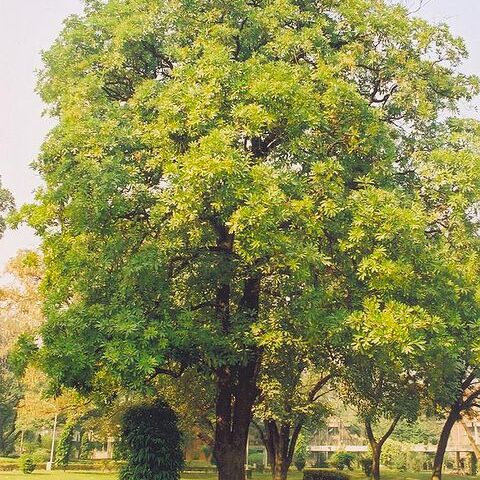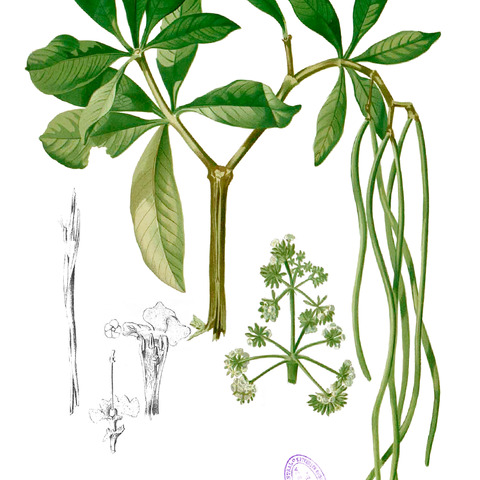Perennial shrubs or trees, evergreen; latex white. Stems without spines. Leaves petiolate, opposite or 3–7-whorled; lamina entire, membranous to coriaceous, glabrous or with basifixed hairs; colleters absent. Inflorescences terminal, cymose, pedunculate. Flowers ±scented, pedicellate. Calyx without colleters. Corolla salverform; tube cylindrical, swollen about stamens, without scales, externally glabrous or with indumentum, internally with indumentum which is usually denser below stamens; lobes sinistrorse or dextrorse in bud. Corolline corona absent. Stamens included, inserted in middle or upper part of tube, not adherent to style-head; anthers lanceolate. Disc annular. Style-head cylindrical or truncate-conical. Fruits apocarpous, woody paired follicles, fusiform. Seeds numerous, flattened, oblong, unwinged, with brown hairs around entire margin, tufted at ends.
Trees or shrubs; branches verticillate, in whorls of 4–5. Leaves verticillate or opposite (not in our area), petiolate, with or without intrapetiolar stipules which are often adnate to the petiole; colleters present in leaf axils. Inflorescence terminal, thyrsoid or compound, subumbellate, in whorls of 1–5. Flowers 5-merous, actinomorphic. Corolla white, yellow or red; tube cylindrical, widened around anthers, thickened at the throat; lobes spreading, overlapping to the left. Stamens included; anthers basifixed, introrse. Disk present, free or adnate to the ovary, often indistinct. Ovary 2-celled, apocarpous or syncarpous, ovules numerous, style terete, stigma bifid, subtended by a cylindrical or slightly conical clavuncula. Fruit of two follicles, free or connate at the base. Seeds numerous, pubescent, ciliate, sometimes winged.
Trees or shrubs, latex present. Branches whorled, mostly 4 or 5 together. Leaves whorled, rarely opposite; lateral veins numerous, ending in a marginal vein. Cymes terminal, usually 1-5in thyrses or compound umbels, terminal. Flowers white, yellow, or pink. Calyx without glands inside, lobes connate at base. Corolla salverform, tube cylindric, dilated in distal half,pubescent inside, lobes overlapping to right or left. Stamens included, inserted near or above middle of corolla tube; anthers ovate, free from pistil head, not caudate; disc absent or ofscales. Ovaries 2, distinct or connate, ovules numerous. Follicles 2, free or connate. Seeds oblong or linear, long bearded at both ends; endosperm thin; cotyledons up to twice as longas radicle.


